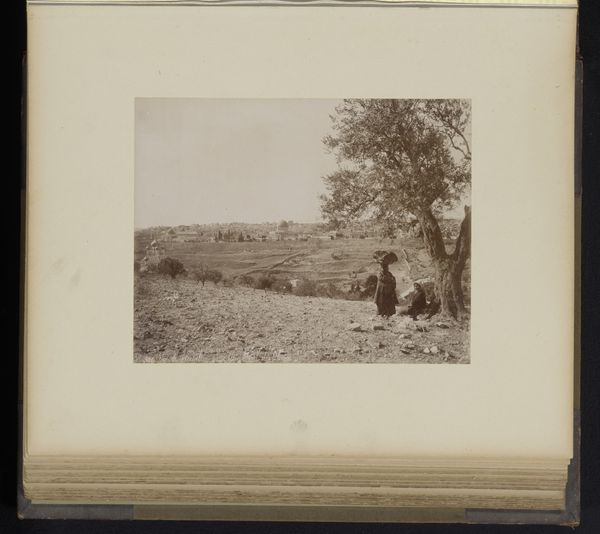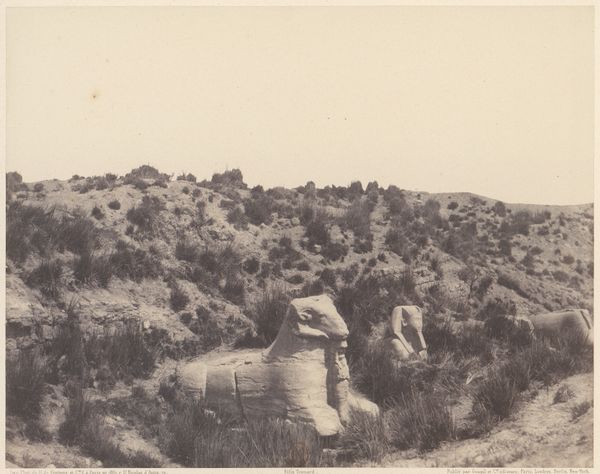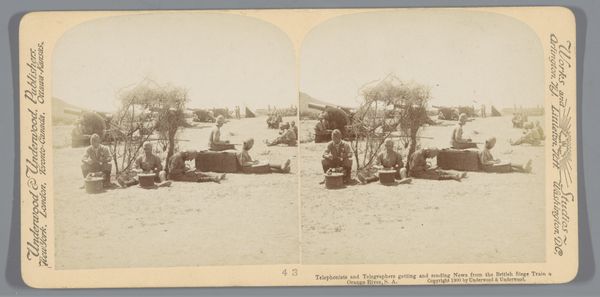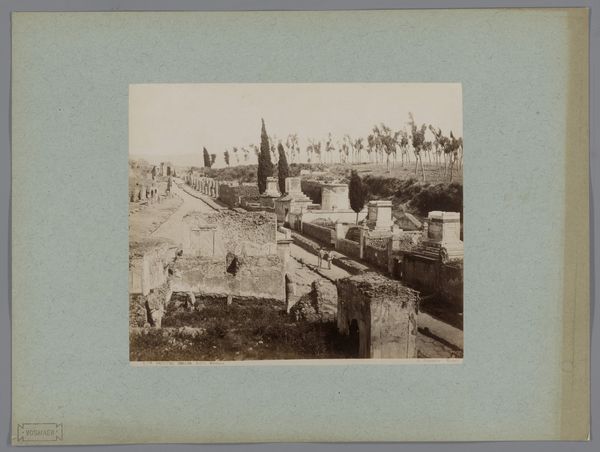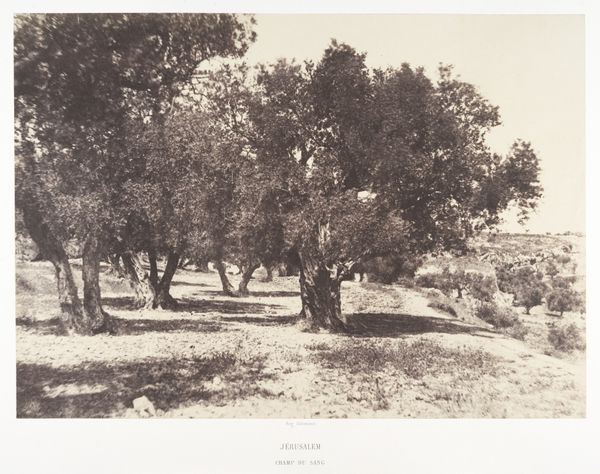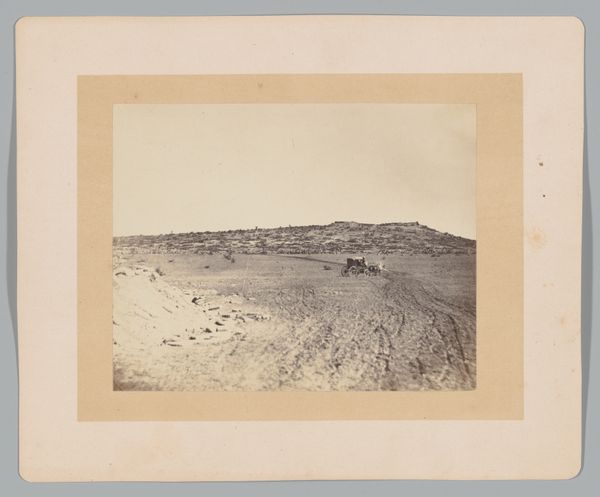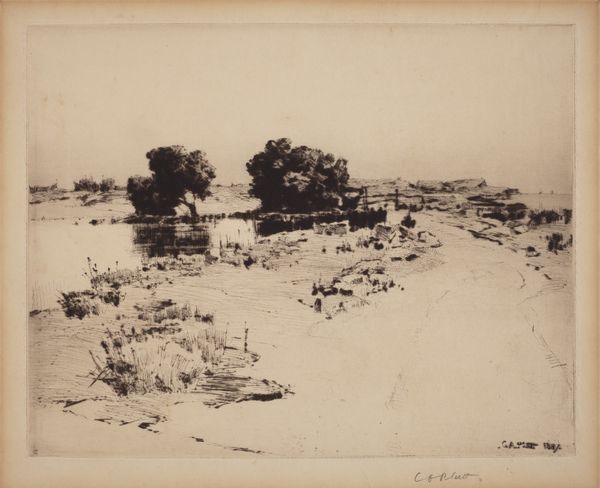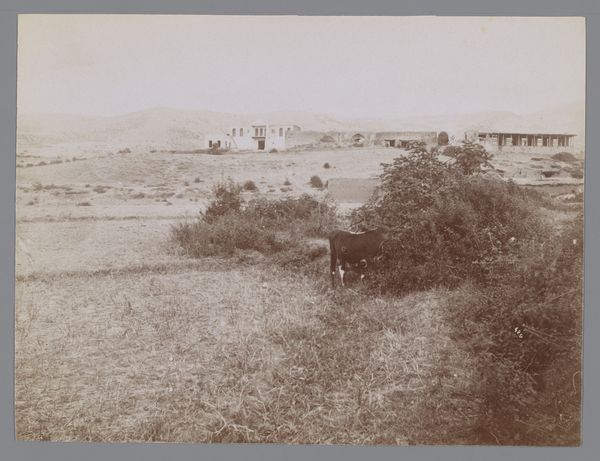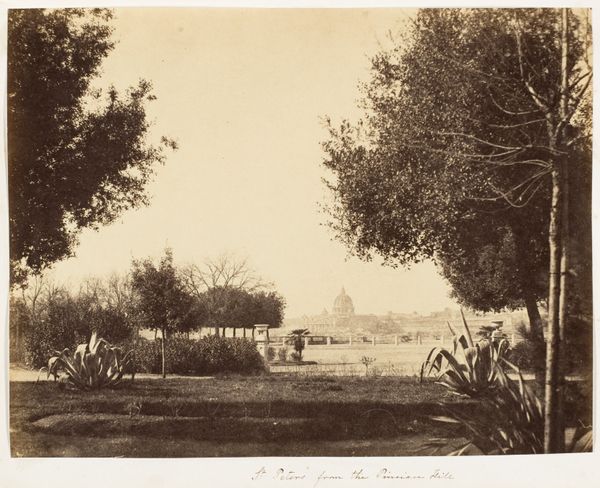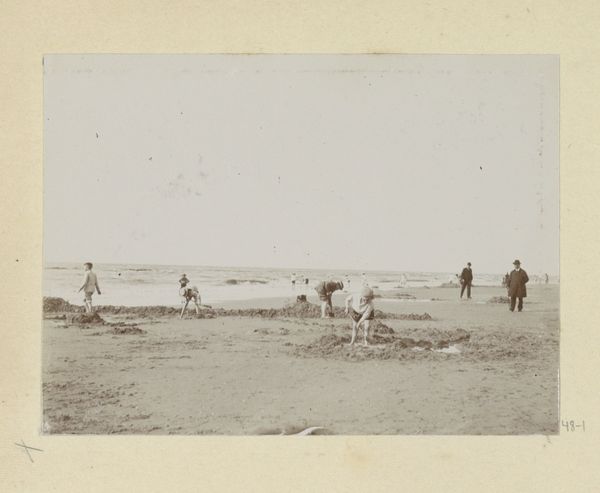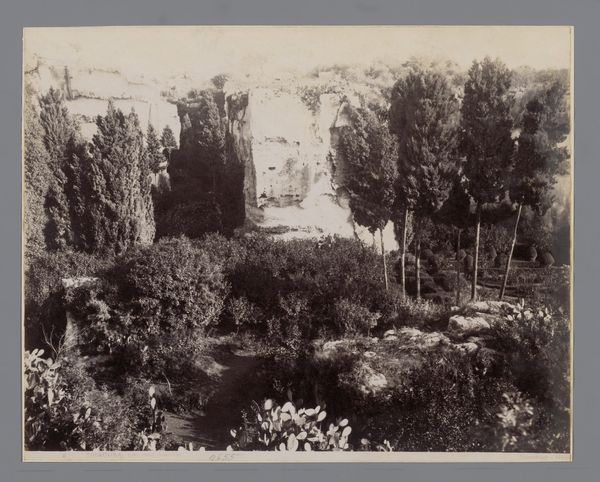![Zerguenebeh [?], Iran [?] by Antoine Sevruguin](/_next/image?url=https%3A%2F%2Fd2w8kbdekdi1gv.cloudfront.net%2FeyJidWNrZXQiOiAiYXJ0ZXJhLWltYWdlcy1idWNrZXQiLCAia2V5IjogImFydHdvcmtzLzAxYjc4MjVkLWQ5NWYtNDgxNi04N2MwLWYyZDgwZTljNzhlMS8wMWI3ODI1ZC1kOTVmLTQ4MTYtODdjMC1mMmQ4MGU5Yzc4ZTFfZnVsbC5qcGciLCAiZWRpdHMiOiB7InJlc2l6ZSI6IHsid2lkdGgiOiAxOTIwLCAiaGVpZ2h0IjogMTkyMCwgImZpdCI6ICJpbnNpZGUifX19&w=3840&q=75)
photography, albumen-print
#
landscape
#
photography
#
orientalism
#
albumen-print
Dimensions: height 157 mm, width 228 mm
Copyright: Rijks Museum: Open Domain
Editor: This photograph, tentatively titled "Zerguenebeh, Iran," comes to us from the lens of Antoine Sevruguin, dating back to sometime between 1880 and 1910. It's an albumen print, giving it that lovely, sepia-toned depth. It feels…quiet. Almost haunting, like a forgotten corner of the world. What catches your eye when you look at this? Curator: That sense of stillness is exactly what pulls me in, too. The way Sevruguin captures light…it's like time itself is pausing. I see a cultural record, of course—a glimpse into a specific place and time in Persia. But beyond that, I wonder about the human stories intertwined with this landscape. Look at the small arched bridge and the delicate line of trees—doesn’t it hint at paths once walked, lives once lived? And the emptiness of the riverbed – does that speak of drought, change, or maybe something more profound? Editor: I hadn't thought of the dry riverbed as a sign of drought... or even change! I was so caught up in the overall serenity of it. Does Sevruguin typically focus on these kinds of quiet, landscape scenes? Curator: Sevruguin was interesting because while some of his work romanticized Persian culture for Western consumption, a sort of "Orientalist" approach if you will, he also documented everyday life with striking honesty. This piece treads a fine line. The composition is undeniably beautiful, but there's an unvarnished quality that keeps it grounded. Does that make sense? Editor: Yes, totally. The serenity I see isn't just romantic; there's also a sense of reality to it. A stillness born from…the way things are, rather than how someone *wishes* them to be. It also brings up some questions of access... Curator: Exactly! It’s that tension, I think, that makes it so compelling. What did you think about that numbered stone at the bottom of the frame? What's your take on that being in such prominent view? Editor: I honestly didn’t even notice the stone! But now I’m so intrigued. Maybe that was there for a very particular reason... or no reason at all. That has shifted my appreciation and thoughts a whole bunch, thank you! Curator: And thank you. It’s wonderful how one small detail can reframe our entire understanding. I wonder what else remains hidden just beneath the surface, waiting to be seen.
Comments
No comments
Be the first to comment and join the conversation on the ultimate creative platform.
